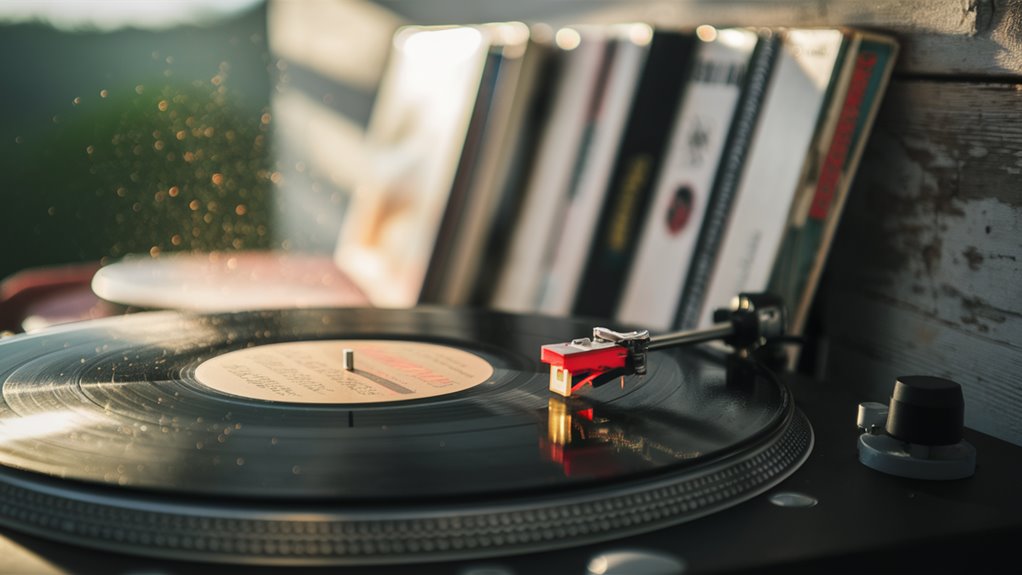Simple Unknown Songs for New Players: Hidden Music Treats

Must-Try Starting Songs
Solo songs for new players are a great way to start playing music. These unknown works help find the right mix of skill test and ease, and are key for new players.
Suggested List of Songs
Begin with pieces in easy keys like G major and D major. These keys have smooth patterns and soft beats. Folk songs and early classical works are good to learn from, while learning lists from creators like Burgmüller guide your growth. Visit more Website
Skill Growth
Work on songs that show:
- Strong tune parts
- Clean chord moves
- Easy harmonies
- Simple beats
- Steps in difficulty
Building Music Skills
Planned practice of these less-known pieces helps grow:
- Basic finger moves
- Simple music theory
- Reading music
- Playing with trust
- Own art style
Picking the Right Songs
Pick pieces that have:
- Steady patterns
- Fair hand spots
- Smart repeats
- Slow rises in trickiness
- Change in music
These missed solo works are great ways for new players to grow their music skills while playing fun, less-known songs.
Why Go For Hidden Songs
Why Choose Hidden Songs: A Guide to Finding Less-Known Music
The Plus Points of Finding New Songs
When you look for music to learn, going past the usual picks opens new ways to get better.
Hidden song gems have perks that famous songs cannot give, like skill growth and freedom in art. Scene This Year
Free to Make It Your Own and Get Better
Less-known music pieces let players make their own art style without sticking to how others play them.
These unknown works mostly have easier setups, making a good base to build core music skills and know-how.
Educational and Playing Perks
Clear Learning Parts
Hidden music gems often have:
- Special chord moves
- Well-planned tunes
- Easy beat setups
- Better sight-reading chances
Playing Gains
Knowing hidden songs leads to:
- A new list of songs to play
- Firmer skill base
- Better sight-reading
- Own art growth
By picking secret music works, musicians build a unique list of songs while learning main skills through clear, easier setups.
This way leads to both know-how and your own art style, making you stand out in your music path.
Choosing the Best Fit
Finding Your Best Fit: Picking the Right Music Piece
Looking at Your Skills
Start with a full check of your skill levels, focusing on key spots:
- Reading music
- Finger speed
- Beat know-how
Song Picking Points
Looking at Music Patterns
Go for songs with steady patterns and easy beats. Think about songs with:
- Few hand moves
- Good key signs
- Fit beat levels
- Doable skill needs
Beat Fit
See how the song’s beats match your skills:
- Simple eighth note setups
- Sixteenth note runs
- Off-beat rhythms
- Beat sign tricks
Making the Top Pick
Careful Listening Steps
- Listen to many pro records
- Look at the tune build
- Check the music flow
- Think about the style of the song Attracting Guests With Contests
Adapting to Skills
When facing hard songs:
- Break them into small parts
- Try simpler versions
- Keep the main music vibes
- Work on learning in steps
Pick songs that fit both your now skills and music dreams, making sure you keep growing and enjoying your practice time.
Starting Small, Making Big Sounds
Starting Small, Making Big Sounds: A Guide to Easy Music

Picking Strong Yet Simple Songs
Easy music lists can make impressive shows while keeping the skill needs low. Focus on songs with strong tune parts and few chord moves to show off expressive playing over hard skills.
Best Keys and Spots
Open string works in keys like G major, D major, and C major give natural sounds and full tones. These basic keys use open strings well, making rich sounds with little left-hand hard work.
Folk songs and simple classical works are great start points for new players.
Easy Moves for New Players
Natural harmonics add clear, bell-like sounds to simple tunes with little skill needs.
Repeated patterns in music give both steady skill use and chances to grow in sound shifts and your own style.
Smart Practice Growth
Pick pieces with smart rests and long notes for smooth hand moves. This careful choice in songs helps grow skills well while you gain trust through doable tests.
Step-by-step learning sets up strong basics while keeping playing fun.
Growing Skills in Unknown Songs
Growing Skills in Less-Known Piano Works
Key Hidden Gems for Getting Better
Not well-known music works give cool chances to grow skills past the normal start lists.
These hidden finds have tests that build main skills better than usual picks.
Base Songs to Learn From
Burgmüller’s 25 Easy and Rising Studies are top helps for new piano players.
Each study hits specific skill tests while being easy for newcomers.
These well-made songs help step-by-step growth in needed piano skills.
Baroque Choices Not By Bach
Telemann’s 12 Fantasias are great for learning baroque style.
These works grow key skills like finger acts alone and steady beats, offering an easier start than Bach’s works. Creating Budget-Friendly Entertainment
The pieces keep baroque twists while being easy to handle.
Modern Lists for Skill Growth
20th-century teaching works give great chances to get better:
- Kabalevsky’s 24 Pieces for Children
- Prokofiev’s Music for Children
These sets step-by-step bring in new sounds and odd rhythms, making students ready for top new music.
Their easy skills with smart sounds make them top for growing top listening while building main skills.
These not often used songs make a full base for music growth and skill know-how, giving smart help in piano learning.
Tips for Good Practice
# Tips for Good Practice
Must-Do Practice Moves for Playing Well
Smart beat control and planned practice moves are key to getting better in music. Start at 50% beat with careful, planned moves, putting note rightness over speed.
Break hard songs into small 4-8 measure parts, getting each part right before putting them together.
Better Performance Moves
Recording yourself is a must to see small mistakes, often missed when you play live.
Set clear practice goals for each time, whether working on hard parts or making the sound better.
Use a steady beat tool often, moving the beat up only after getting it right three times.
Building Skills Right
Hands-alone work builds strong muscle memory and skill base needed for hard work.
Work on tough parts with focused alone practice, working on exact trouble spots.
Find and use your best top work times in the day.
These full practice moves make sure both skill and art grow while keeping good form.
Key Show Points
- Beat control
- Getting each part right
- Checking recordings
- Goal-driven times
- Step-by-step moves
- Exact skills
